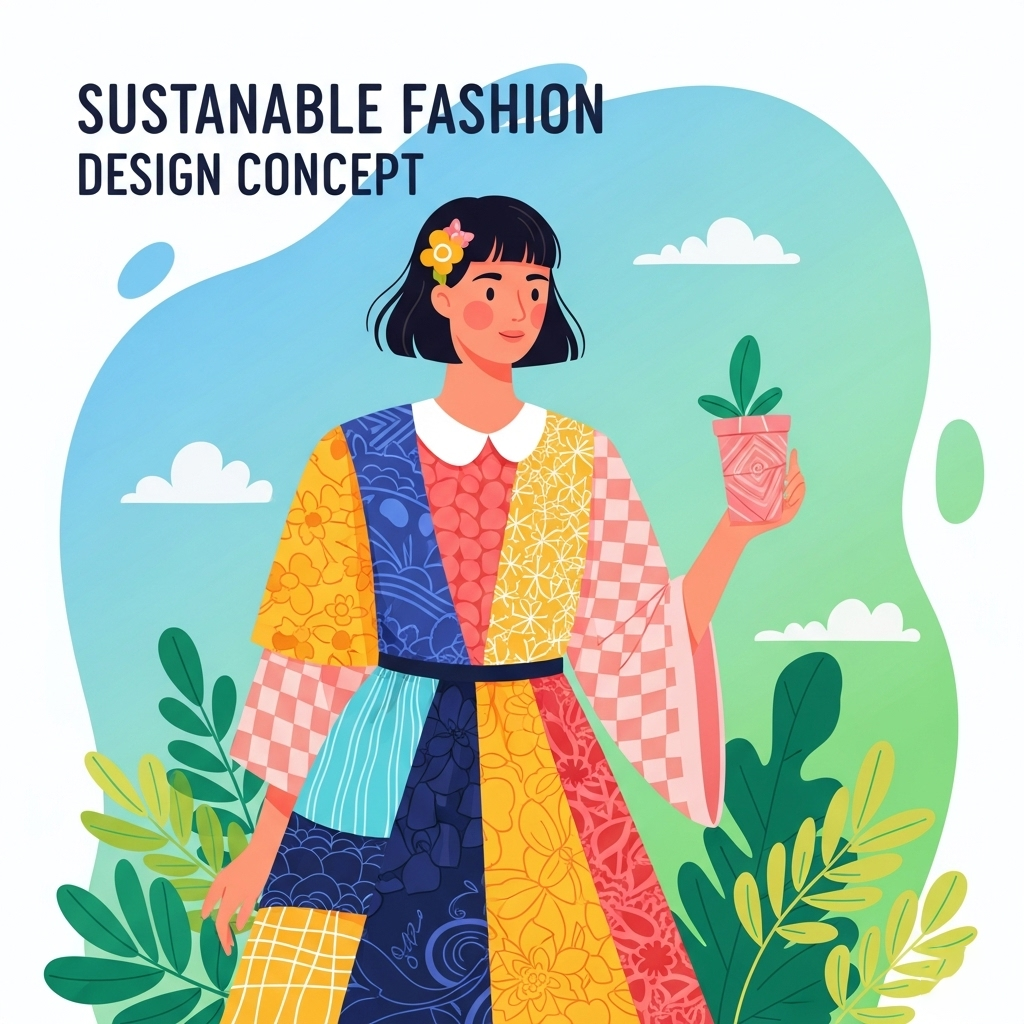The fashion industry, long celebrated for its creativity and dynamism, is facing a critical reckoning. Its environmental and social impact has come under increasing scrutiny, prompting a global movement towards sustainable fashion. This paradigm shift recognizes the urgent need to address the detrimental effects of conventional fashion practices, from resource depletion and pollution to labor exploitation and waste generation. The rise of sustainable fashion is not merely a trend; it represents a fundamental reimagining of the industry, driven by a growing awareness of our planet’s limitations and a collective desire for a more ethical and environmentally responsible future.
The environmental footprint of the fashion industry is staggering. The production of raw materials like cotton and synthetic fibers requires vast amounts of water, land, and energy, often involving harmful pesticides and chemicals. Dyeing and finishing processes contribute significantly to water pollution, while the transportation of goods across the globe adds to carbon emissions. Furthermore, the fast fashion model, characterized by rapid production cycles and cheap, disposable clothing, fuels excessive consumption and generates mountains of textile waste that end up in landfills. The sheer scale of the industry, coupled with its linear “take-make-dispose” approach, has placed an unsustainable burden on the planet’s resources.
Beyond environmental concerns, the social impact of the fashion industry is equally pressing. The pursuit of low production costs often leads to the exploitation of garment workers in developing countries, who may face unsafe working conditions, long hours, and poverty wages. Issues such as child labor and forced labor remain significant challenges within the supply chain. Consumers are increasingly demanding greater transparency and accountability from brands, wanting to know not only where their clothes come from but also under what conditions they were made.
In response to these challenges, a diverse and innovative sustainable fashion movement has emerged. This movement encompasses a wide range of approaches aimed at minimizing the industry’s negative impacts and fostering a more circular and ethical system. One key aspect is the focus on sustainable materials. Designers and manufacturers are exploring alternatives to conventional fibers, such as organic cotton, hemp, linen, recycled polyester, and innovative bio-based materials derived from sources like algae, mushrooms, and pineapple leaves. These materials often have a lower environmental footprint in terms of water usage, pesticide use, and greenhouse gas emissions.
Another crucial element of sustainable fashion is the emphasis on circularity. This involves designing products with longevity and recyclability in mind, encouraging practices like repair, reuse, and upcycling, and developing systems for textile recycling. The goal is to move away from a linear model towards a closed-loop system where resources are kept in use for as long as possible, minimizing waste and reducing the need for virgin materials. Initiatives like clothing rental platforms, secondhand marketplaces, and brands offering repair services are gaining traction, promoting a more circular approach to fashion consumption.
Ethical production practices are also central to sustainable fashion. This includes ensuring fair wages, safe working conditions, and the respect for human rights throughout the supply chain. Brands are increasingly focusing on transparency and traceability, providing consumers with information about the origins of their clothes and the social and environmental standards of their production processes. Certifications from organizations that verify fair labor practices and environmental standards play a crucial role in building trust and accountability.
The role of consumers in driving the sustainable fashion movement cannot be overstated. As awareness of the industry’s impact grows, consumers are becoming more conscious of their purchasing decisions. They are asking questions about the materials, production processes, and ethics of the brands they support. Choosing to buy less, opting for higher-quality, longer-lasting garments, supporting sustainable brands, and engaging in practices like repairing, sharing, and buying secondhand are all ways in which consumers can contribute to a more sustainable fashion system.
Technology and innovation are also playing a vital role in advancing sustainable fashion. From developing new sustainable materials and dyeing techniques to creating more efficient production processes and improving supply chain transparency through blockchain technology, innovation is offering solutions to some of the industry’s most pressing challenges. 3D printing, for example, has the potential to reduce waste by producing garments on demand and minimizing material offcuts.
The transition to a truly sustainable fashion industry is a complex and multifaceted endeavor that requires collaboration across the entire value chain, from raw material producers and manufacturers to brands, retailers, and consumers. Governments and regulatory bodies also have a role to play in setting standards and incentives for sustainable practices. While significant progress has been made, there is still much work to be done to address the deep-rooted environmental and social issues within the fashion industry.
The rise of sustainable fashion represents a fundamental shift in values and priorities. It acknowledges that fashion, while a powerful form of self-expression and cultural commentary, must also be responsible and mindful of its impact on the planet and its people. By embracing innovation, promoting circularity, prioritizing ethical practices, and empowering conscious consumption, the fashion industry can move towards a greener and more equitable future, ensuring that style and sustainability go hand in hand. This is not just about making better clothes; it’s about building a better world, one thread at a time.


Leave a Comment
Your email address will not be published. Required fields are marked *